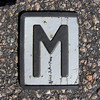I think we're in for a rough ride. I'm hoping well do something to avert another Depression. The following arrived in my inbox from http://knowledgenews.net/, they give a good analysis of our current situation:
"The Dow Jones Industrial Average lost 778 points yesterday, in what media outlets called "its largest point decline ever." That's a little misleading. In percentage terms, the 7 percent loss doesn't even come close to the stock market's real blackest days.
Still, it's hardly a good omen. With a credit crunch freezing up capital, some pessimists are now even using the "d" word to describe what might be coming: depression. We have no crystal ball, and can't say whether such comments are overheated hype or fair warning. But we can replay the history of the last depression America suffered through--just in case you missed it in our 5 Dark Days special.
Dow Down Big
When the closing bell of the New York Stock Exchange rang on October 29, 1929--Black Tuesday--the market lay in ruins. And so did many an investor. The Dow Jones Industrial Average finished the day down almost 12 percent. The day before, it had bled nearly 13 percent. Wall Street has seen worse days. On October 19, 1987, the Dow shed nearly 23 percent. But before long, that market had rounded up the bulls and regained its lost ground.
Not so in 1929. The brief rally that followed the crash quickly proved to be what traders call a dead-cat bounce. The Dow sank to new lows in November. Then it sank some more. By the time it hit bottom--in 1932--the market had shed nearly 90 percent of its value. Not until 1954 would the Dow again touch its 1929 peak.
Banks Close Up
The crash poured kerosene onto an already flammable financial house. Just as investors lost their shirts, poorly regulated banks went bust, either in the crash or in the crush of jittery depositors demanding their cash.
By 1933, 11,000 of the United States' 25,000 banks had closed up shop. Consumers stopped spending, businesses stopped producing, and the economy slipped into a coma. By 1933, U.S. manufacturers produced half of what they had in 1929, and a quarter of American workers had no job.
Government Does Nothing
Government only made the crisis worse. Standard policy then was to let the economy sweat out financial fever. Treasury secretary Andrew Mellon said, "Liquidate labor, liquidate stocks, liquidate the farmers, liquidate real estate. . . . People will work harder, live a more moral life. Values will be adjusted, and enterprising people will pick up the wrecks from less competent people."
Yet the depression that followed the crash of 1929 was an order of magnitude worse than any previous economic crisis, literally off the chart. The American economy eventually recovered--more than a decade later, spurred by massive wartime spending--but not before government completely changed its approach, shifting to hands-on economic policies and programs that persist even today."
--Michael Himick
Maybe our congressmen also receive http://knowledgenews.net/, in their inbox! That would be great.















1 comment:
This is quite interesting. I had no idea just how much manufacturing decreased from 1929 to 1933.
Post a Comment